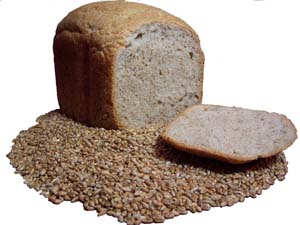 When you’re trying to lose weight, there are a lot of simple ingredient swaps and recipe modifications that you can make in order to remove some of the fat and calories from your favorite baked goods.
When you’re trying to lose weight, there are a lot of simple ingredient swaps and recipe modifications that you can make in order to remove some of the fat and calories from your favorite baked goods.
When you follow a gluten-free diet, it is even more difficult to make your favorite baked goods lower in fat and calories because you have to often substitute a variety of specialty flours in order to mimic the taste of traditional recipes.
“The main reason someone would go on a gluten-free diet is if they are diagnosed with celiac disease,” said EA Stewart, RD, nutritionist and author of The Spicy RD. “Some people may go on a gluten-free diet because they think it will help them lose weight or improve their athletic performance. It’s very important however, that celiac disease be ruled out before someone starts a gluten-free diet, as a person needs to be eating gluten for the test to be accurate.”
While a gluten-free diet is not typically a weight loss method, it is certainly possible for gluten-free dieters to shed pounds. According to Stewart, the weight loss typically occurs when someone goes on a gluten-free diet and simultaneously cuts a lot of carbohydrates, as well as calories, from their diet.
“There is no research to suggest that a gluten-free diet aids in weight loss,” said Stewart. “Additionally, often times people gain weight on a gluten-free diet if they start eating a lot of processed gluten-free foods which tend to be high in sugar, fat, and calories.”
So, what do you do if you love to bake, but you don’t love the weight gain associated with processed, gluten-free foods?
Eat small portions. If you keep you portions size smaller than average, you can occasionally indulge in sweets without worrying about whether you’ll derail your diet. “Because I keep my diet very healthy, I don’t worry so much about cutting calories and fat in my gluten-free baked goods,” said Stewart. “I’d much rather eat a little bit of an ‘indulgent’ homemade gluten-free baked good made from minimally processed products and whole gluten-free grains rather than a lot of a store bought heavily processed, low fat product.”
Use fruit. Make any dessert healthier by limiting the butter, sugar and high-fat dairy and adding fresh fruit. Whenever possible, cook with fresh berries, apples or bananas and substitute fruit or vegetable purees, like avocado, pumpkin or sweet potatoes for the fat in your recipes. While it might take a little bit of trial and error to get the ratios right, you’ll eventually be happier and more satisfied with the final product.
 Add grains. Make your baked goods higher in fiber by looking to whole gluten-free grains to create your favorite recipes. Some popular options include quinoa, amaranth, millet, brown rice, certified gluten-free oats and teff. “Almond or other nut flours are also good to use for gluten-free baking as they provide additional fiber and protein,” said Stewart. “More importantly, the taste is really great!’
Add grains. Make your baked goods higher in fiber by looking to whole gluten-free grains to create your favorite recipes. Some popular options include quinoa, amaranth, millet, brown rice, certified gluten-free oats and teff. “Almond or other nut flours are also good to use for gluten-free baking as they provide additional fiber and protein,” said Stewart. “More importantly, the taste is really great!’
Experiment as much as possible. Whether you have celiac disease or simply want to cut down on the gluten in your diet due to a sensitivity or preference, don’t be afraid to experiment with recipes. “When I first started baking gluten-free, I followed recipes exactly, but later on I started trying to create my own,” said Stewart. “Some were failures, but others turned out to be great. It’s also important to substitute flours by weight rather than measurement when converting a regular recipe to gluten-free, as different flours have different weights. Try using xanthan and guar gum if you tolerate them but if not, try experimenting without. ”
If you’re a novice baker, start by experimenting with baked good such as muffins and cake which are fairly easy to convert to gluten-free. Breads are trickier to master.
“I will be absolutely thrilled the day I make a delicious loaf of gluten-free sourdough bread,” said Stewart.

